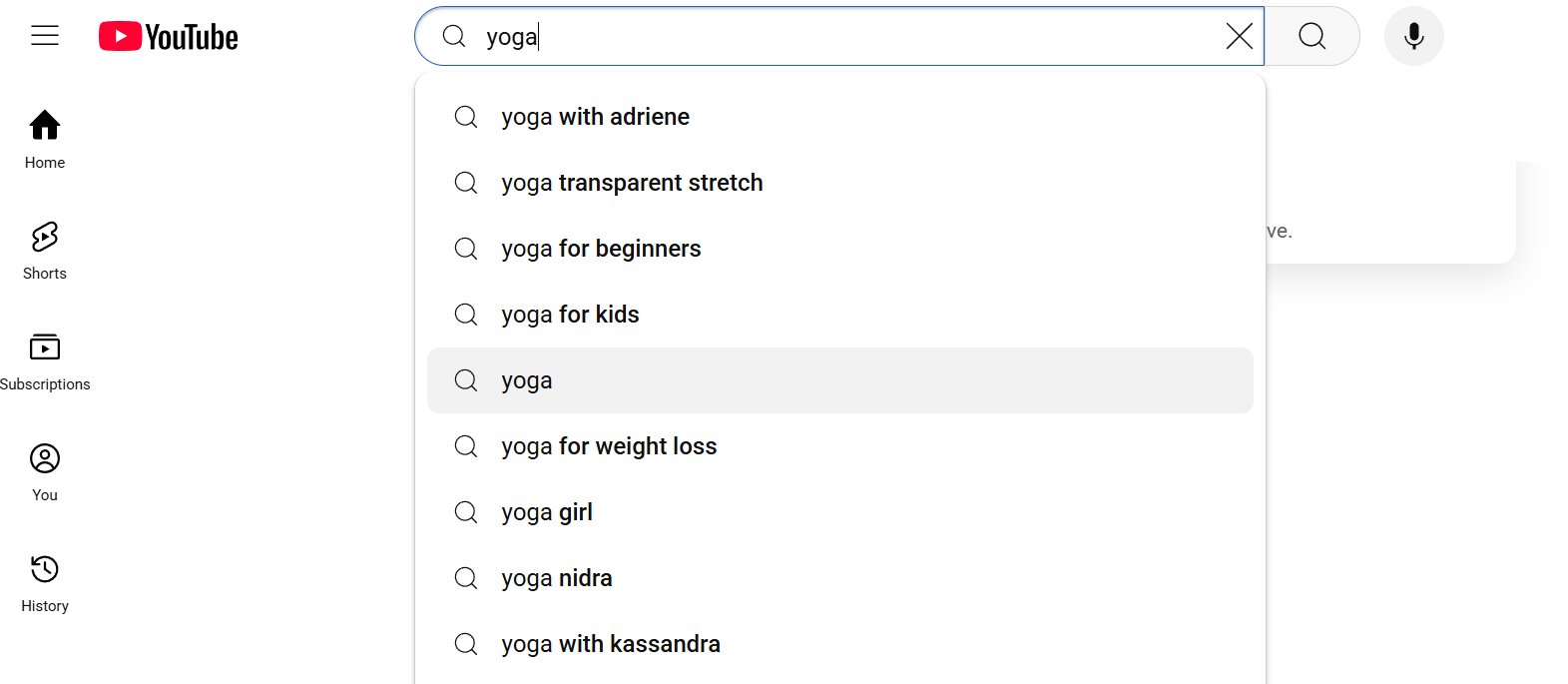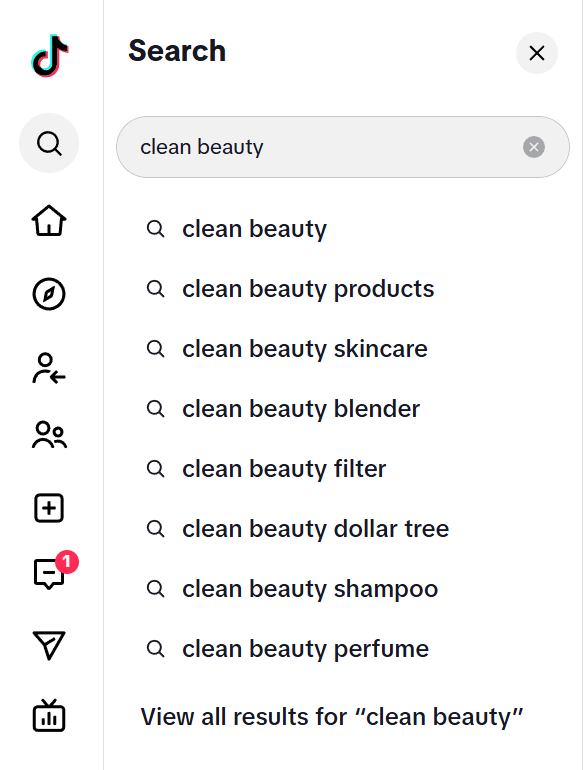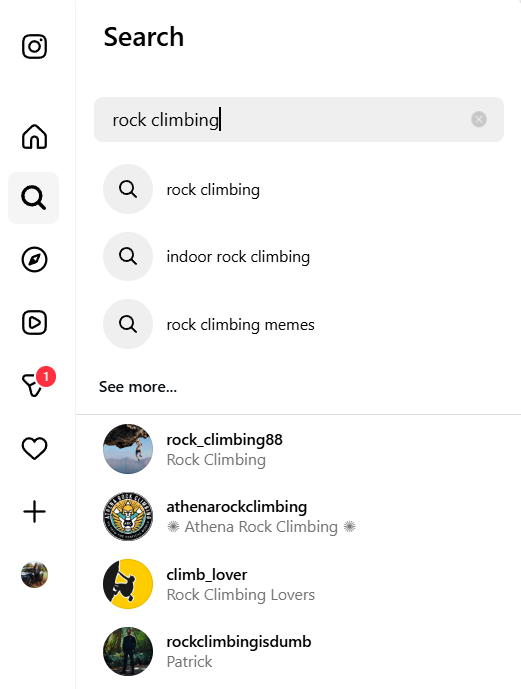How to maximize your social strategy with video SEO

Table of Contents
Video SEO has evolved from a YouTube-centric strategy to a multi-network, social-first landscape. Imagine you see a rock climbing gym while on a walk. Inspired, you type in “rock climbing tutorial,” on Google. You see a section of links from YouTube, but also notice TikTok videos and Instagram Reels in the results, perhaps thanks to brands’ finely tuned video marketing strategies. Although YouTube is the second largest search engine in the world, video SEO is expanding to other social media networks.
Social search is an important consideration for brands as YouTube, TikTok and Instagram have become popular networks for discovery. Consumers use these networks to find how tos, product suggestions and advice via searches. A Q2 2025 Sprout Social Pulse Survey found that 37% of all users go to social first for product recommendations, and 41% of Gen Z users say social media is the number one place they search.
For brands, this means optimizing video content for in-network discovery is paramount. Social posts also increasingly appear in search engines like Google so optimizing them may increase the visibility of your social video content across platforms. Creating quality video content is just step one; making sure your target audience can find it involves a bit of SEO savvy and a smart marketing approach.
What is video SEO?
Video SEO is the process of ensuring your social media video content performs well for in-network discoverability. When paired with a strong overall SEO strategy, there is additional opportunity to boost your videos in search engine results pages (SERPs), particularly with YouTube content. Broadly, video SEO strategy includes optimizing titles, metadata and captions with keywords that balance audience search intent with competitiveness.
Crafting quality video content and understanding how audiences use social search also plays a role. Hashtag, social keyword and social listening research help you understand what your audience is looking for and create content that speaks their “language”. This means that over time, SEO for videos can have a positive impact on your audience growth and conversions.
The power of social video SEO
Having a video SEO strategy has dual benefits. It directly enhances your brand’s social content discoverability, and social “signals” such as likes, comments and shares influence broader SEO performance. These engagements tell search engines about a piece of content’s popularity and relevance. Social signals can shape a search engine’s perception of your content and brand, which further affects visibility and share in SERPs. Plus, YouTube videos, TikTok content and Instagram posts are indexed in search and can contribute to your brand’s overall SEO standing.
Search behavior, especially among younger generations, has evolved. A Q2 2025 Sprout Social Pulse Survey found that Gen Z consumers are using social more intentionally, to search and inform how they spend money: 90% said social media has influenced a purchase they’ve made in the last six months.
As our 2025 Content Benchmarks Report found, the percentage of video content posted is increasing across networks and industries. That’s because it’s what consumers want, so social media algorithms are favoring video content due to this higher engagement
In turn, this prioritization of video affects the search results of traditional search engines. This means that social video is becoming a key part of discoverability and intent capture for brands.
How to develop a comprehensive video SEO strategy
A successful video SEO approach requires a mix of awareness during your content creation process and management of a few technical aspects. This includes an understanding of keyword research, metadata, video embedding and more. You can win the social search game with a bit of research and learning.
Here are the critical pieces to know for your video SEO strategy.
Conduct video keyword research
Keywords are the foundation of all SEO tactics and the main connection between you and the consumers conducting searches. To boost your videos’ visibility in search results, your SEO strategy needs to include the phrases and words audiences are typing into search engines and social media networks. These also appear as hashtags on social posts, which are an additional way to search on some platforms.
For example, a cosmetics brand that focuses on clean, safe ingredients might target a keyword like “clean beauty.”
To find some that could be a fit, start with listening to what your audience is saying, researching what hashtags frequently appear together on posts and what’s trending on social media.
Social media tools like Sprout Social Listening process social posts across networks in seconds to highlight patterns in conversation that matter to your brand and audience. Use these insights to extract popular keywords and topics, discover relevant conversations and optimize your video content for your audience.
With these initial ideas, you can explore further with a mix of traditional SEO tools and social media apps. Tools like Answerthepublic.com, Semrush and Ahrefs include offerings to help you search for and sort through keywords and conversations on social. Try typing in your initial keywords on Google or in-app native search to see what suggestions it offers; these are often a clue into keywords to optimize for.
For our cosmetic brand example, typing in “clean beauty” prompts suggestions like “clean beauty makeup” and “clean beauty eyeshadow.” On networks like Instagram, searches might look more like a question format like: “what are the best clean beauty brands?”
Adapt format, unify messaging and apply keyword themes
Once you have keywords and hashtags relevant to the conversations you want to be part of, begin designing your video content ideas. Consider the needs of individual platforms and audiences while implementing a consistent brand voice.
Tailor your video content for each social network your brand is on. Your videos will need to be adjusted in format and length for the platforms you’re using. While there are many similarities, TikTok, YouTube and Instagram have their own nuances for videos. Your audience may also vary slightly across platforms, and your videos can be cut or edited slightly for each one.
Unified messaging will help keep your brand consistent even when videos are adapted for different platforms. For long-form YouTube content, keyword themes help optimize your content while keeping it human. These themes include a primary keyword (for example, “yoga outfits”) and a set of secondary keywords that are related (yoga outfits for summer, yoga outfits for men, outfits for yoga, etc.). Instead of focusing on one individual keyword for your YouTube video and risking overstuffing and robotic language, a keyword theme will incorporate multiple relevant options that bolster your primary keyword. These selections will be used in metadata, captions, titles, hashtags and transcripts of your videos. Adding your keyword selections throughout chapter titles in your YouTube transcript is a great way to work them in naturally. Each usage reinforces your brand messaging while building content search engines can recognize, find and promote.
Create content that stimulates engagement
Social signals help algorithms and search engines understand how popular your content is through likes, shares and comments. These video engagement markers can influence your brand’s visibility and credibility in-app and to search engines. It helps show your content is worthwhile and valuable to audiences.
When creating your videos, focus on what your audience’s interests and needs are. Your posts should catch attention, but then offer something (information, entertainment, community, etc.) your audience will benefit from. Craft posts that they will want to respond to, share and save to increase engagement and support your video SEO ranking along the way.
Engaging as a brand matters, too: in a Q2 2025 Sprout Social Pulse Survey, 58% of social media users said they want brands to prioritize interacting with audiences.
Follow optimal technical specifications
The technical minutiae matters when it comes to video SEO. When creating video content, make sure to select a file type that is compatible with the networks you’re uploading to and search engines indexing your posts and website. Stay within file size guidelines and optimize necessary HTML elements when embedding the videos on your website to ensure search engines can find your content.
It’s also important to be aware of specification requirements and quality standards for different social networks. For example, Instagram will compress 4K video content, which can affect the quality and impact your engagement. Maintaining audio quality is also key, as poor audio will affect how people interact with your video.
Stable URLs are important for your website’s video content; search engines may lose or not be able to find videos that have frequently changing URLs. Lastly, be sure to include quality thumbnail images on your YouTube and website versions, at a resolution of 1280×720. This will be showcased prominently in search results.
Share and embed your videos
Though social media links are gaining traction and influence in search, your website is still an important piece of your SEO puzzle. When you create video content, sharing and embedding it on your website helps to build backlinks and gives more opportunities for search engines to discover your content. A few key tips for making the most of video content on your website:
- Create a dedicated page on your site for each video, if possible. Google requires that videos have an individual page to be eligible for main page search results.
- Compress video files. This will reduce load times and improve user experience, especially for those viewing your content on their phone (we know from social media video statistics that 79% of people prefer watching videos on a smartphone).
- Input appropriate structured data. This is the information within the video’s embed HTML including title/name, description, and thumbnail. Each video should have unique structured data and metadata, as it influences how the videos appear in search results.
- Understand how to remove or restrict videos when needed. Sometimes, you might not want videos to contribute to your SEO or need to remove old content. You can do this by including “no index” tags in the HTML or by redirecting an old video page to a 404 (no watch) page to signal to search engines it should not be included.
Collaborate with influencers and creators
Influencer marketing campaigns can give your brand an expanded reach both within a social media network and in search engine results. Work with creators to maximize visibility across specific niche communities where they already have a presence.
Partnerships with YouTube influencers in particular are an excellent way to supercharge your video content strategy. These campaigns offer opportunities to circle back to your keyword research and choose a few related to specific niches that align with your brand and the influencer’s. Their video SEO strategy can, in turn, benefit yours—a plus when it comes time to track your KPIs.
Track social and search performance
As you roll out your video SEO, it’s critical to track how your content is performing via social and organic search analytics. You can monitor social analytics to an extent in each network, or employ a tool like Sprout Social. With Sprout’s analytics, you can view all of your accounts in one dashboard and get clear insight on how each network is performing and how they compare.

Social listening will help you understand how discussions around your keywords are changing as your video content goes live. Sprout’s Social Listening adds more context to your ROI data story by tracking trends, social conversations and behaviors. Seeing how these align with your content performance KPIs helps uncover overarching patterns and how well your strategy is addressing them.

The third component of your data approach is search analytics. These can be found within tools like Google Analytics or may be included in CRM and marketing platforms you use. Search analytics monitor which posts are being indexed and which queries are prioritizing social video in the results. Mindfully tracking these data buckets will help you adjust SEO strategy when needed and showcase the benefits in reporting.
How video content and SEO work in social search
Social search in practice functions similarly to queries on a search engine. Keywords, optimized content and brand credibility matter here, too. With networks that prioritize video content, there are additional nuances to consider. Here, we cover brief guides for three of the major video social networks: YouTube, TikTok and Instagram.
YouTube SEO
If your content performs well within YouTube’s search algorithm, it can give you a boost in Google SERPs, too. YouTube SEO prioritizes keywords, highly engaging content and videos with rich descriptions. Here’s what to consider as you decide how to promote your YouTube to keep SEO at the forefront:
- Conduct keyword research in network and third-party tools, and identify relevant keyword options.
- Add two to three relevant keywords and hashtags to your video descriptions. Make your video titles catchy, and include a keyword. Typically, 70 characters is recommended for titles.
- Create playlists of related content on your channel. This can keep viewers on your content longer and boost credibility for the algorithm.
- Craft quality video descriptions that work. Don’t give into temptation to keyword stuff here. Instead, include things like a timestamp list for chapter moments that mention the search terms you’re prioritizing and links to your other platforms.
- Design thumbnails that grab attention and display keywords.
- Use tags to let YouTube’s algorithm know what your content is about. Keywords often fit nicely here.
TikTok video SEO
TikTok’s evolution from an entertainment-focused short-form video app to a mega platform featuring content, communities and even shopping makes it a powerful choice for brands looking to boost their video SEO. TikTok’s search algorithm prioritizes content relevance, post engagement and a user’s activity history. Users’ For You Pages (FYP) and search results are also impacted by their device settings including location and language.
When optimizing a video for TikTok SEO, use this checklist to make sure you’re leaning into what this particular algorithm loves:
- Fine-tune your keywords. You can implement the same research approach you’d use on a search engine here to discover keyword suggestions and ideas via TikTok’s search feature.
- Work in those keywords in captions, subtitles and hashtags of your posts. Make sure keywords are used verbatim at least once.
- Keep it short. Videos of all lengths get traction, but TikTok says 21 to 34 seconds is the sweet spot.
- Keep it high quality. Video resolution of 720p or higher performs best according to TikTok.
- Engage. Take advantage of TikTok’s LIVE feature, interact in comments and jump in on trending sounds and videos to increase traction.
Instagram Reels SEO
Instagram Reels have surged in popularity, with over a billion Reels now on the platform. Users in the app search for Reels content by clicking the magnifying glass icon and typing in a query. Brands’ Instagram SEO should incorporate both and consider these tips:
- Use relevant keywords in captions, brand’s bio and alt text. Alt text helps social networks and search engines understand the content of your video, and makes your content more accessible to all audiences.
- Incorporate strategic hashtags in each Reel’s caption.
- Turn on subtitles for Instagram Reels to make sure your content is accessible. If you make sure to say your keywords in the video, you’ll get another “mention” of it via the subtitles. Additionally, include onscreen text strategically. Reels autoplay in feed and on For You pages, so onscreen text can help catch attention and utilize your keywords.
- Use location tags when it makes sense.
A solid video SEO plan is a critical component of a broader social discoverability strategy; use our Social Search Optimization Worksheet to integrate your video efforts into a complete social search plan.
Climb the social search ladder with video SEO
Social search algorithms evolve constantly, and your video content strategy will need to be continuously monitored and tested to keep up. Track how your efforts are doing and adapt where needed as you go.
Investing in a social listening and trend analysis tool like Sprout Social Listening will support your video content strategy and keep you ahead of the curve to know which keywords to go after. Read our 2025 Content Benchmarks Report to learn more about the popularity of video across social networks and gauge the baseline of your brand’s current strategy.






Share